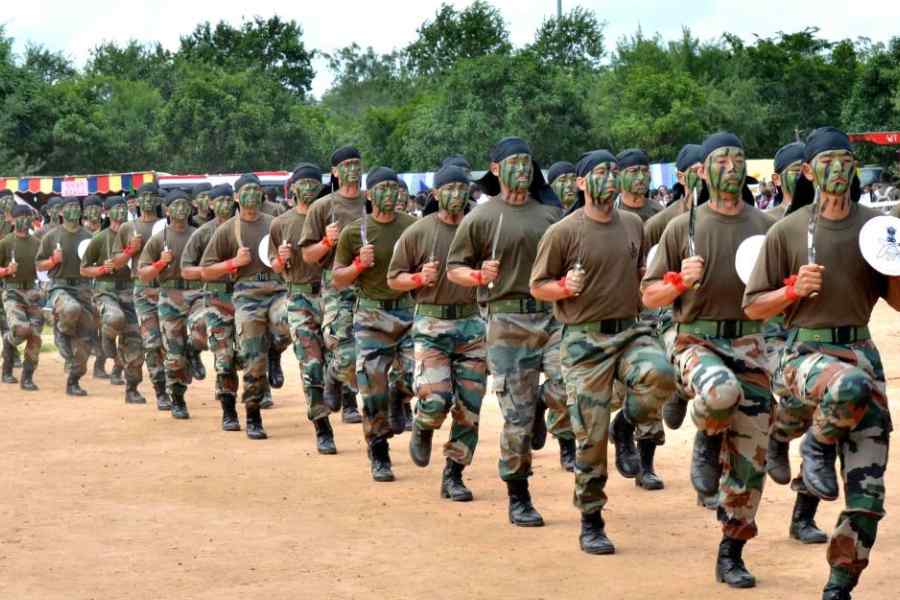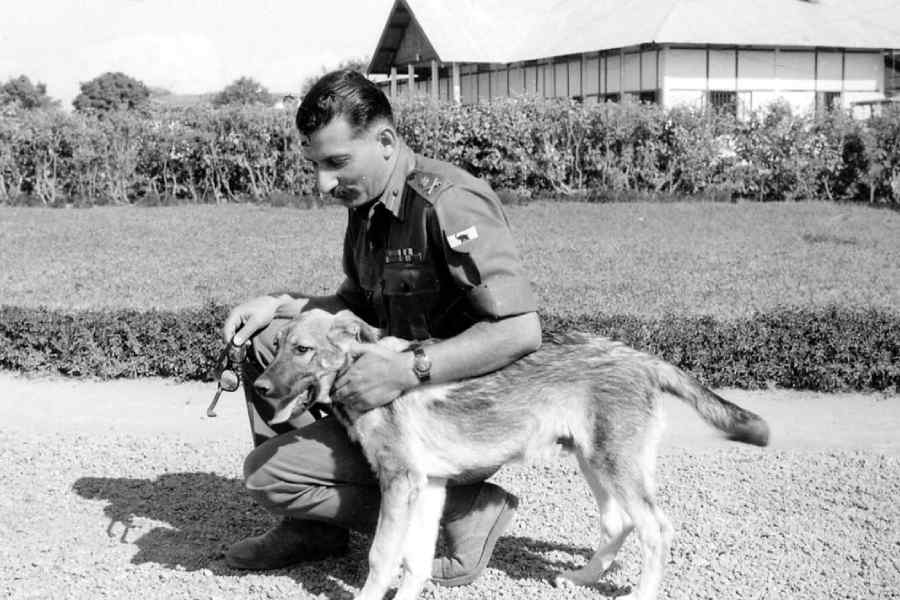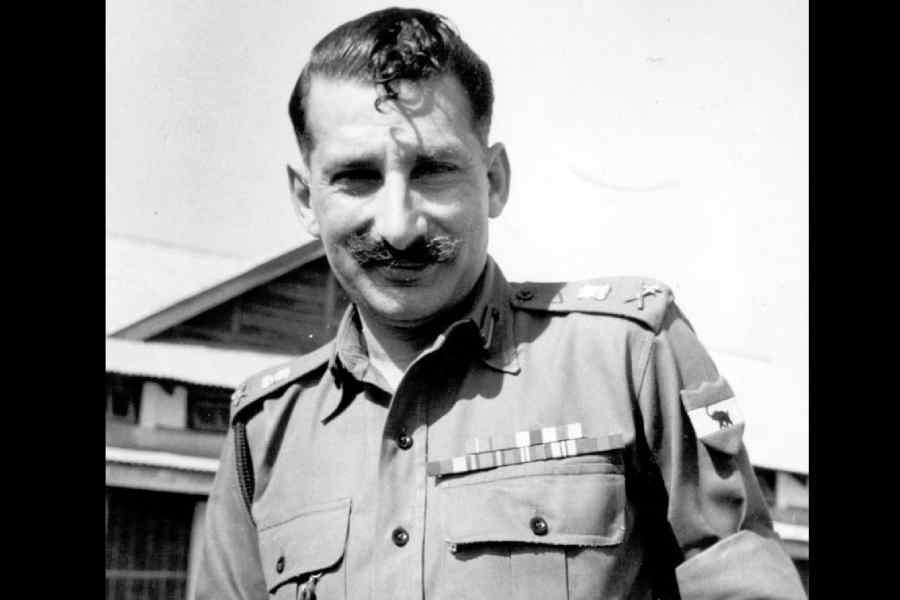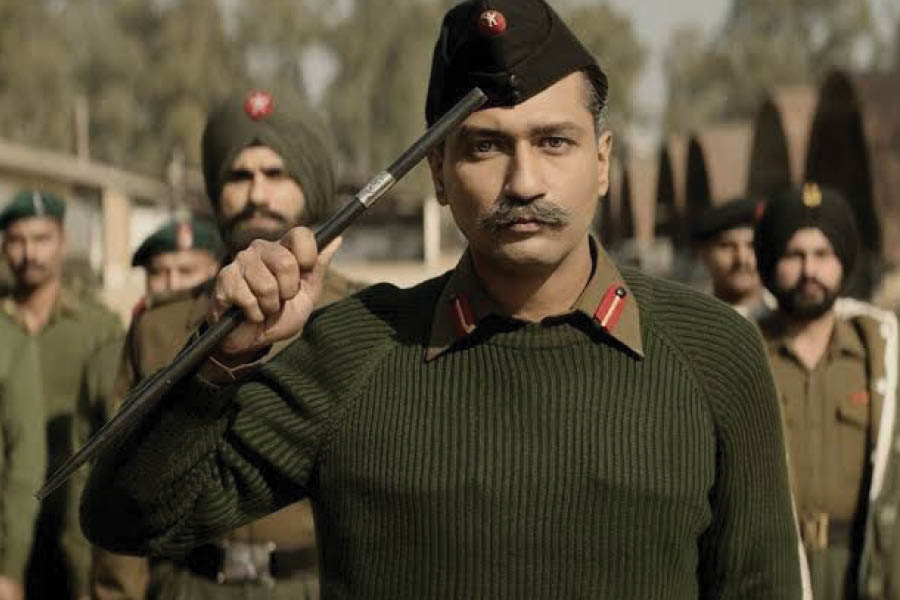A scene in the film Sam Bahadur perfectly describes the bond between a Gorkha soldier and his officer.
The biopic of late Field Marshal Sam Manekshaw — the army chief during the 1971 war — has been running for a month. In the scene, Sam spots a sentry from his regiment, the 8th Gorkha Rifles, wearing his distinctive Terai hat with a red pompon at Sam’s court of inquiry for “anti-national” behaviour. When Sam asks the man if all is well, he replies that what is happening here is not.
All will be well, Sam tells the sentry, thumping his shoulder. He couldn’t have said the same about the Indian Army’s Gorkhas today.
India’s seven Gorkha Rifles regiments have a history that dates back to the early 19th century when they served the Sikh Army under Maharaja Ranjit Singh. So impressed was the Maharaja with the Gorkhas’ performance against his forces in the Nepal-Sikh War that he recruited them after they were defeated. Till today, Gorkhas from Nepal who serve foreign countries are called Lahures — derived from Lahore, the Sikh empire’s capital.
After India’s Independence, six of the 10 “Gurkha” regiments of the time came to India and the rest remained with the British Army. Troops of the four British Gurkha regiments who wanted to serve free India were drafted to form the 11th Gorkha Rifles (11GR), India’s seventh Gorkha regiment. The seven Indian regiments collectively have 39 battalions of about 850 men each. Gorkhas serve in other regiments as well.

Gorkha regiment jawans perform in Ranchi File photo
India and the United Kingdom recruit soldiers from Nepal on the basis of a tripartite agreement with the Himalayan kingdom in 1947. The UK also recruits police for Singapore and soldiers for Brunei from Nepal.
In India, the army has in the past shot down proposals to indigenise these regiments on the principle that one need not fix what is not broken. Even after Independence, the element of the 9th Gorkha Rifles involved in the Jallianwala Bagh massacre was not disbanded. In 2016, the 6th Battalion of the 1st Gorkha Rifles was raised with only Indian Gorkhas.
With the advent of democracy in Nepal, political parties, especially the ruling Left, have opposed foreign recruitment. However, this continued as the salary remittances and pensions to the 1.26 lakh pensioners of the Indian Army alone make up around two per cent of Nepal’s GDP.
The ratio of Nepali Gorkhas to Indian Gorkhas in these regiments is 3:2, and 32,000 Nepalis — including those in other regiments — were serving in the Indian Army in 2020, the year recruitment halted because of the pandemic.
Recruitment of Nepali soldiers by the Indian Army has not resumed. Instead, with the introduction last year of Agnipath — the four-year recruitment scheme of the Indian military — it has been postponed indefinitely until Nepal’s political parties arrive at a consensus on the new scheme.
“When (Nepal Prime Minister) Prachanda visited (India) in June, there was no talk of Agniveer (Agnipath recruits). It’s practically a closed chapter,” the former Director-General (Recruitment), Lt Gen. Shakti Gurung, a veteran from the Indian Gorkha community, told The Telegraph.

Sam Manekshaw File Photo
“Indian Gorkhas can’t fill the vacancies as the youth are now aware of other avenues. In schools in Uttarakhand (where Gurung lives) Gorkha youths consistently score more than 90 per cent in the boards. On a visit to a school recently, students told me they want to do engineering, management, mass communication — things that all other children want.”
He added: “Nepal, which allows (the use of the) Indian currency was not consulted during (the 2016) demonetisation, and they haven’t been consulted on Agnipath. It’s obvious that they feel slighted.
“There are already reports of Gorkhas fighting in the Russia-Ukraine war, and enrolling in the French Foreign Legion. If (China’s) People’s Liberation Army starts recruiting from Nepal now, we would have Gorkha facing Gorkha on the border with China. New India has a great role to play in the southern hemisphere but it can’t forget its home front.”
In the film, Sam, played by Vicky Kaushal, delivers the late Field Marshal’s oft-quoted line: “If a man says he is not afraid of dying, he is either lying or is a Gorkha.”
In Nepal, veterans’ groups have threatened protests if India doesn’t roll back the Agnipath scheme or relax it for Nepalis.
Neither is likely, the retired adjutant general of the Indian Army, Lt Gen. Rakesh Sharma, told this newspaper.
Sharma, former colonel commandant of 11GR and now a distinguished fellow at the Vivekananda International Foundation think tank, said Nepal’s unfavourable response also stems from the fact that “they don’t want trained soldiers to come back after four years of service to a country that had an insurgency just 15 years ago” — hinting at such men being wooed by private armed groups.
The Indian Army annually hired 1,200 to 1,500 Gorkhas from Nepal until the freeze.
“The Agniveers are performing well, and we can’t now have different policies for troops in the same army,” Sharma said. “As Gorkha veterans, we would not want a change in character but the deficiency of recruits will have to be filled.”
Sharma referred to the recent recruitment of Kumaonis, Garhwalis and Nagas by the 5th Gorkha Rifles to fill the vacancies created by the halt in recruiting Nepali Gorkhas. He said this was not the first instance of units changing their composition.
“After (the army raided the Golden Temple in) 1984, several Sikh units were amalgamated with Dogra or Jat units for about 15 years until they reverted to being purely Sikh units,” Sharma said.
“Whether future recruitment would happen from Chhattisgarh, Jharkhand or the Northeast, that is something for the Gorkha fraternity to think about…. Regiments like the Grenadiers, Madras and Assam regiments, which have personnel from different states who speak different languages, have worked as well or badly as any other regiment.”
Tim Gurung, a British Army Gurkha veteran, author and chronicler of the martial community, suggested that the Agniveer scheme betrayed New Delhi’s lack of respect for the 1947 treaty that allowed India and Britain to recruit Nepali soldiers -- who serve under broadly equivalent terms in both countries.
He tweeted on Friday: “India has no respect for the Tripartite Treaty, Nepal is as ignorant and indifferent as it always has been, and leaders are too busy enriching themselves, and it’s the Gorkhas who are made to pay the ultimate price as usual at the end.”
Just as Manekshaw retired quietly — despite apprehensions of him leading a Pakistan-like coup at the peak of his career — the Gorkhas will, too, unless India and Nepal agree on a better deal for young men who “raise their hands”.
As regimental lore goes, a Gurkha infantry unit was converted for airborne duties in Burma (now Myanmar) during World War II. On their first flight, their officer asked them who wanted to jump first. Only half raised their hands.
When the officer asked their Subedar why only half of them had volunteered, he sheepishly replied that this was because they had not been told they would be given parachutes.











